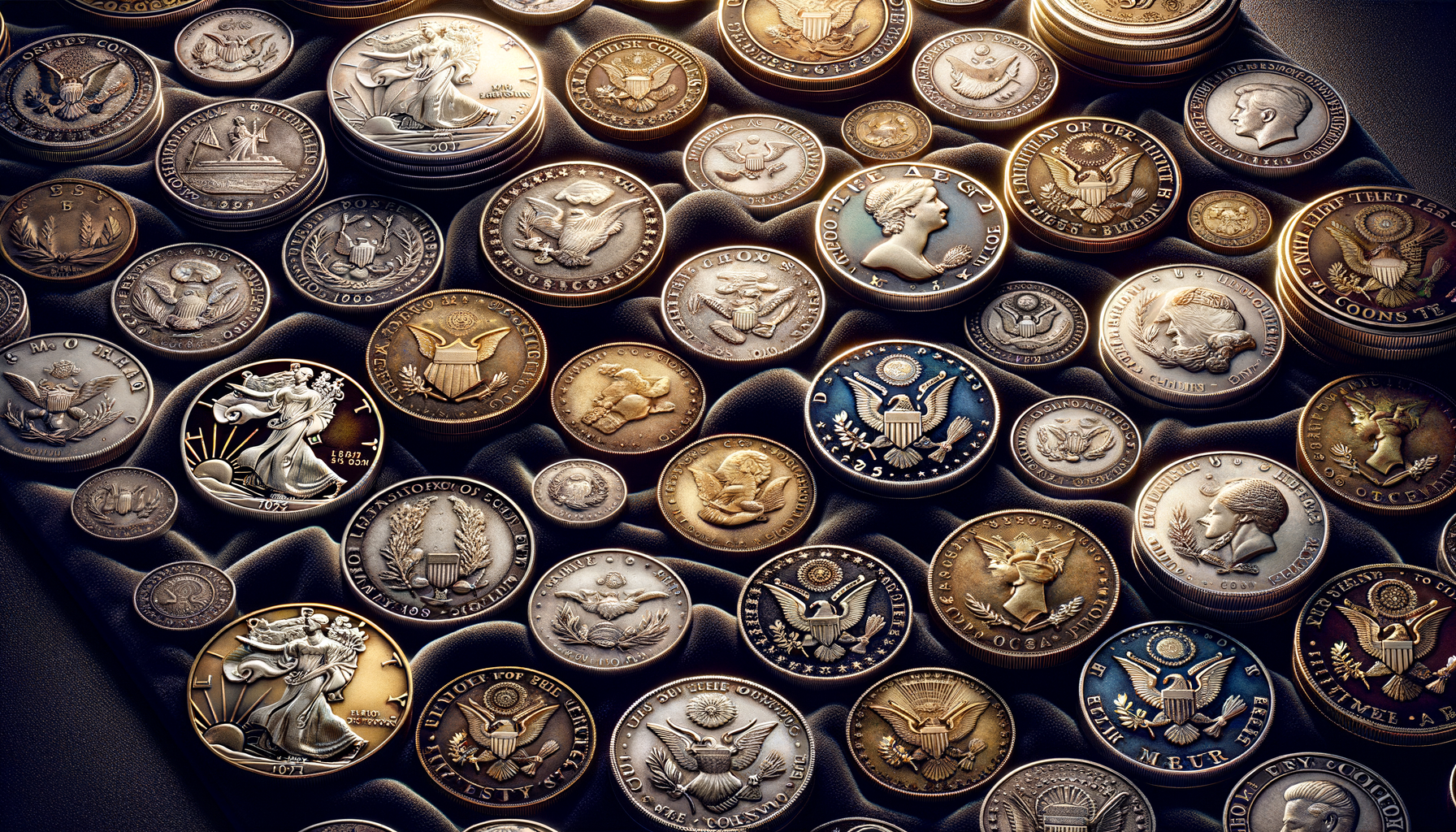The Allure of US Rare Coin Collection
Collecting rare coins is a passion shared by hobbyists and investors alike. The US rare coin collection is especially fascinating due to its rich history and the stories each coin tells. From the early colonial pieces to the more modern commemorative issues, US coins offer a tangible connection to the past. Coin collecting, or numismatics, is not just about acquiring coins; it’s about appreciating the artistry, the history, and the rarity of each piece.
One of the most appealing aspects of collecting US rare coins is the diversity of the coins themselves. Each coin has its own unique story, reflecting different periods in American history. For instance, the 1794 Flowing Hair Dollar is considered one of the first silver dollars minted by the United States, making it a prized piece for collectors. Such coins are not only valuable due to their age but also for their historical importance.
For those new to the hobby, starting a collection can be as simple as picking a theme, such as coins from a specific era or those featuring a particular design. The key is to select coins that interest you and to learn as much as possible about them. This knowledge not only enhances the collecting experience but also increases the potential value of your collection over time.
Understanding the Value of US Coins
The value of US coins is determined by several factors, including rarity, demand, condition, and historical significance. Rarity is one of the most critical aspects. A coin’s rarity can be influenced by its mintage numbers, survival rate, and the number of coins still in existence. For example, the 1913 Liberty Head Nickel is one of the most famous rare coins, with only five known to exist.
Demand is another vital factor. Some coins are highly sought after by collectors, which can drive up their value. Coins that are part of a popular series or have an interesting backstory often see higher demand. The condition of a coin, often referred to as its grade, also plays a significant role in its value. Coins are graded on a scale from Poor (P-1) to Perfect Mint State (MS-70), with higher grades generally commanding higher prices.
Historical significance can also add to a coin’s allure and value. Coins that were part of significant historical events or periods tend to be more desirable. Collectors often seek out coins that provide a glimpse into the past, offering a connection to the events and people that shaped history.
Building a US Coin Collection: Tips for Beginners
Starting a US coin collection can be a rewarding endeavor, whether you’re interested in the historical aspect, the potential investment, or simply the joy of the hunt. For beginners, it’s essential to start with a focus. Decide if you want to collect coins from a specific period, type, or theme. This focus will guide your purchases and help you build a cohesive collection.
Once you’ve chosen a focus, educate yourself about the coins you’re interested in. Understanding the history, mintage, and variations of your chosen coins will make your collecting experience more enjoyable and informed. Joining a local coin club or online community can provide valuable resources and connections with other collectors.
When purchasing coins, it’s crucial to buy from reputable dealers or auctions. This ensures that you’re getting authentic coins and paying a fair price. It’s also wise to start with lower-value coins to build your knowledge and confidence before investing in more expensive pieces. As your collection grows, consider documenting each coin with details about its history, condition, and any special characteristics.
The Role of US Coins in Investment
While collecting coins is a hobby for many, it also presents an opportunity for investment. US coins, particularly rare and historical pieces, can appreciate significantly over time, making them an attractive option for investors. However, investing in coins requires careful consideration and understanding of the market.
One of the primary reasons coins can be a good investment is their intrinsic value. Coins made from precious metals like gold and silver have a baseline value tied to the current market price of the metal. Additionally, rare coins can increase in value due to their scarcity and demand among collectors.
Investors should approach coin collecting with the same diligence as any other investment. This includes researching market trends, understanding grading and valuation, and being aware of potential risks. Diversifying your collection can also help mitigate risks, as different coins may appreciate at different rates.
It’s important to remember that coin investing is a long-term strategy. While some coins may see quick gains, others may take years to appreciate. Patience and a well-informed approach can lead to a successful and rewarding investment in US coins.
Preserving and Displaying Your Coin Collection
Once you’ve started building your coin collection, preserving and displaying your coins is crucial to maintaining their condition and value. Proper storage and handling can prevent damage and ensure your collection remains in excellent condition for years to come.
Coins should be stored in a cool, dry environment to prevent tarnishing and corrosion. Using holders, albums, or cases specifically designed for coins can protect them from physical damage and environmental exposure. It’s essential to handle coins by their edges and avoid touching the surfaces to prevent oils from your skin from causing damage.
Displaying your coins can be a source of pride and enjoyment. Consider using display cases that allow you to showcase your coins while keeping them protected. Rotating your display periodically can also help preserve the coins by reducing prolonged exposure to light and air.
In addition to physical preservation, documenting your collection is equally important. Keeping detailed records of each coin, including its history, condition, and any notable features, can enhance the value and enjoyment of your collection. This documentation can also be useful for insurance purposes or if you decide to sell or trade coins in the future.



Leave a Reply